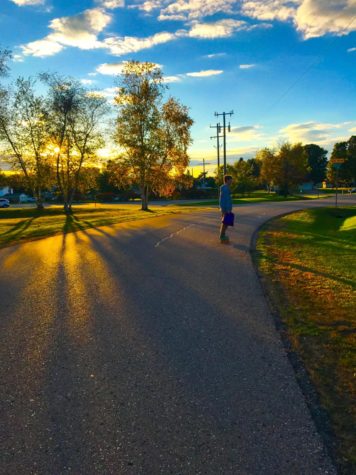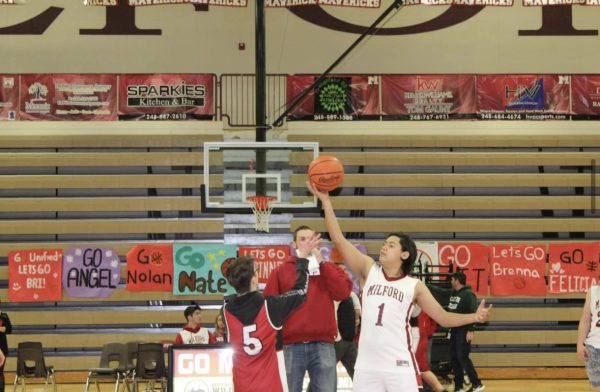The false stereotype of skateboarding
November 27, 2018
Every group has stereotypes. Some are good, but some can be bad.
If you play chess, you’re smart. If you own a big house, you’re rich. But what about skateboarders? What stigma first comes to mind when you think of them?
Is it the disobedient teen that does drugs and has dropped out of high school? Or the kid who saw a man skateboarding and was inspired by his tricks? Odds are that you pictured the first stigma. But why is that? Where did skaters catch the unshakeable stigma of being bad kids? Many stigmas come from the beginning of the groups that hold them, so does the history of skateboarding hold the answer?
Many people, when asked to name a pro Skateboarder, are quick to answer Tony Hawk. However, he does not fit the stereotype of a skateboarder. So how did skateboarding come so far? Skateboarding was an idea thought up by Californian surfers in the 1950’s (does another stigma come to mind?). Early skateboards were crafted with only wooden planks and roller skate wheels slapped onto the bottom. This allowed surfers to “surf” on the sidewalk when the waves were not ideal. The idea caught on. Soon, companies saw the trend as an opportunity and started producing wheels for the newly established “sidewalk surfing.” Fast forward to the early seventies, skateboarding began dying due to the dangers involved. Many skate shops stopped selling the boards due to the amount of injuries skateboarding was responsible for.
This was the beginning of the now evolved stigma. Since skateboarding is dangerous, why would anyone take time to learn the sport?
Many people saw skateboarding as a dangerous sport and waved it off as“something these kids are into nowadays.”However, still going strong in the area of origin, skateboarding soon went through a huge change that has made a bigger difference than wheels.

A Flat Ground Ollie preformed by Ryan Wyskiel. (Photos by Riley Wyskiel)
In 1978, Alan Gelfand performed the world’s first Ollie. Adapted by Rodney Mullen into a flat ground trick (In Skateboarding, a flat ground trick is a trick that can be done on the ground without the use of any rails or ramps) the Ollie changed skateboarding, allowing for skaters to now jump onto obstacles and rails to perform tricks.If the stereotype did not come from the evolution of the sport, then where did the stereotype come from? This is an easy question. If you’ve ever been to a school, or public park, you most likely have seen a no skateboarding sign.
In many places, skateboarding is prohibited and punishable by fines. Some States even prohibit skateboarding as a recreational sport. How can other recreational sports such as basketball and tennis have so many spaces to practice when skateboarding has so few? This may be
a result of the high risk of injury skateboarding holds. In the 70s lawsuits from skaters were filling up courts. Common injuries ranged from cuts and scrapes to broken bones. To avoid these problems many public places prohibit skateboarding on their property.However an easy solution is to create an area or space for these skaters to skate or, in easier terms, build a skate park.

Junior Ryan Wyskiel Skating down a
road.
Unfortunately, skate parks are very expensive and not every city is able to afford the costly expenses of building one. Overall, skateboarding is given a bad wrap due to the high risk of injury in its sport. The legal issues surrounding injuries
and property destruction stunted the growth of skateboarding, but for those love it are no different than any other athlete.








